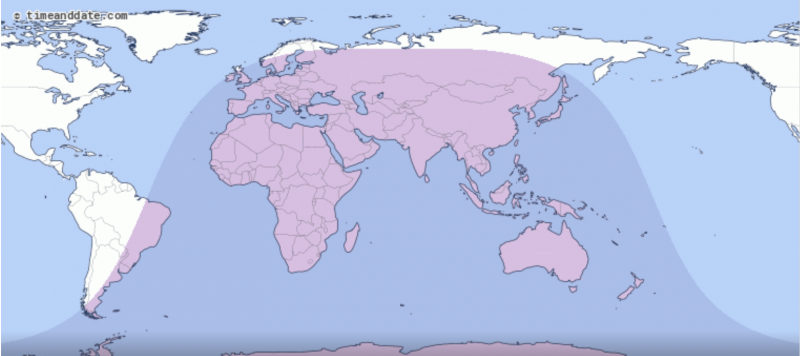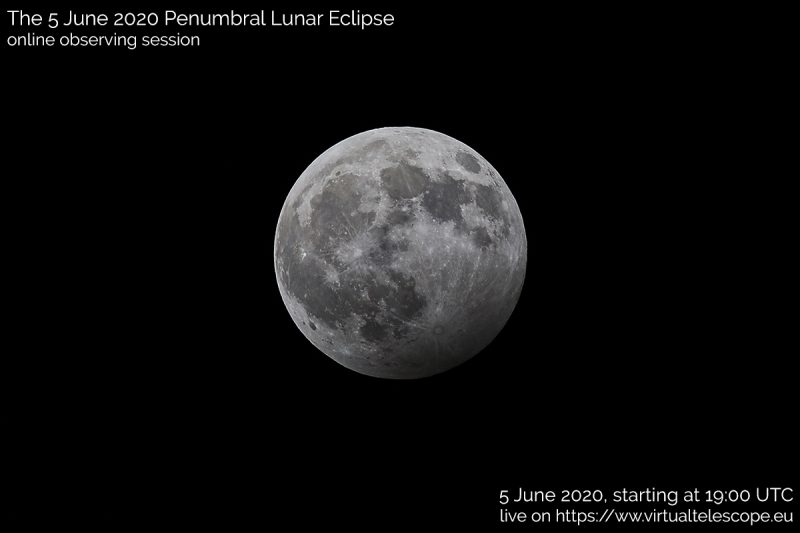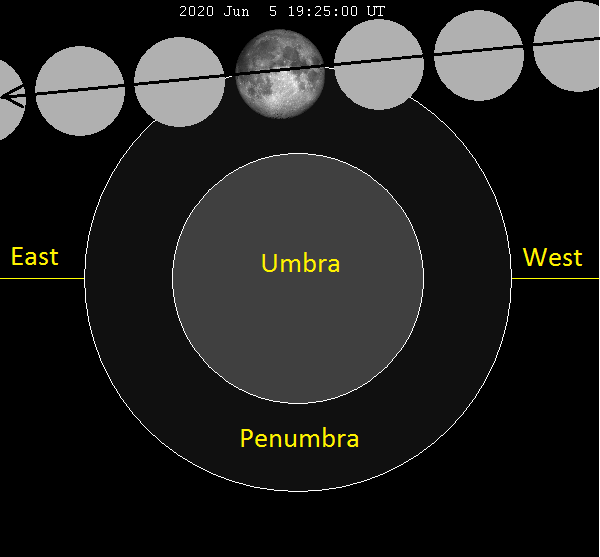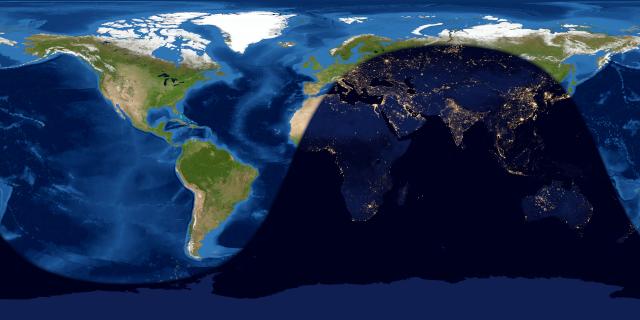On both June 4 and 5, 2020, the moon will look full to the eye as it shines from dusk until dawn. On both nights, the moon will be close to the red supergiant star Antares, brightest star in the constellation Scorpius the Scorpion. The crest of the moon’s full phase – when the moon and sun are most opposite each other on our sky’s dome for this month – happens on June 5, 2020, at 19:12 UTC: translate UTC to your time. For us in North America, that means the moon turns precisely full during the daylight hours on June 5, when the moon will be below our horizon. Yet the other side of the world – those who can see the moon in the sky around the time it turns precisely full – will have access to a lunar eclipse. It’s the most subtle kind of lunar eclipse, one that most people won’t even notice: a penumbral eclipse of the moon.
The Virtual Telescope Project in Rome, Italy, will offer online views of this faint penumbral lunar eclipse on June 5, 2020, starting at 19:00 UTC; translate UTC to your time. For details, visit the Virtual Telescope Project.



If this full moon were truly opposite the sun, there’d be a total umbral eclipse of the moon for the world’s Eastern Hemisphere. However, this June full moon sweeps to the north of the Earth’s dark shadow, and therefore no total or partial lunar eclipse in the Earth’s dark shadow can take place.
Instead, the southern side of the full moon just clips the northern part of the Earth’s penumbral shadow, to stage the faint partial penumbral eclipse of the moon on June 5.
This eclipse will be so faint that most people won’t be able to tell the moon is being eclipsed, even as they are looking at it.

For us in North America, no eclipse takes place. All the action (such as it is) will be happening while the moon is below our horizon. We’ll just enjoy the full-looking moon on the nights of June 4 and 5.
We’ll call this June full moon the Strawberry Moon or Rose Moon.
At temperate latitudes in the Southern Hemisphere, where the impending June winter solstice is bringing about short days and long nights, this June full moon could be called the Long Night Moon.
The full moon acts as a mirror, reflecting the sun’s position in the sky for six months hence. Because the sun is so far south in December, tonight’s moon will follow the low path of the winter sun in the Northern Hemisphere, yet the high path of the summer sun in the Southern Hemisphere.
A bit north of the Arctic Circle, where the sun shines 24 hours around the clock, the June full moon won’t be visible at all; yet, a bit south of the Antarctic Circle, where there is no sun, the June full moon will mimic the midnight sun of summer.

Next month, the northern part of the full moon will clip the southern part of the Earth’s penumbral shadow to give the Earth’s Western Hemisphere its chance to view a nearly imperceptible penumbral eclipse on July 4-5, 2020.
Read more: Middle of eclipse season June 20
Bottom line: All of us around the world (except those in the far-northern Arctic) can look for the moon and red supergiant star Antares on the nights of June 4 and 5, 2020. On June 5, a penumbral eclipse will take place for much of the world except North and South America. The Virtual Telescope Project in Rome, Italy, will offer online views of this faint penumbral lunar eclipse, starting at 19:00 UTC; translate UTC to your time. For details, visit the Virtual Telescope Project.











